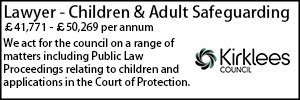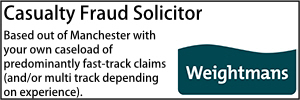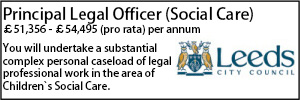Public children law case update – Autumn 2025
Emily Chapman rounds up some of the latest public children law cases of interest to practitioners.
- Details
J and K and LB of Haringey (through their Regional Adoption Agency, Adopt London) [2025] EWHC 1268 (Fam).
The case concerned an application for an adoption of a 17 year old. The issue in this case was whether the applicant (J) and the mother (K) were deemed to be ‘partners in an enduring family relationship’. The court had to consider the wider context of the family relationship and whether the fact that J and K were not in a romantic relationship, and did not live together, hindered J’s application.
The Facts
The young person concerned in the application was L, a 17 year old, born as a result of artificial insemination in 2007. J and K and been in a relationship in 2005, separated after a year, and then recommenced their relationship in 2008 after L was born. They were then engaged to be married but separated in 2009. Following this, they did not live together, but remained close friends and lived near each other.
When the parties met again in 2008, J took on the role of L’s father and the parties then co-parented together ever since. J took on normal family responsibilities, such as attending school meetings, and J, K and L spent most weekends together as a family. L called J ‘dad’ from an early age.
At one stage, K moved house and so J moved house to be closer to K and L. L has a bedroom in both houses, but chooses now to only stay overnight at K’s house. The parties also occasionally went on holiday together.
In 2016, J submitted an application for a child arrangements order by consent so that his parental responsibility could be recognised and the order was made.
The Law
The court set out the legal framework as per s42 to s51 of the Adoption and Children Act 2002 (ACA) and specifically considered ss51(1) and (2), as J was not married or a civil partner, and the court was asked to find that it was satisfied that he was ‘the partner of a parent of the person to be adopted’. In order to establish if J was a partner to K, the court considered s144(4) ACA, with the key question in this case being if J and K were ‘living as partners in an enduring family relationship’.
The court considered relevant authorities including Re G (Children) [2006] 2 FLR 629, Re P (A Child) [2015] 1 FLR 1327, Re E (Adoption by one person) [2021] EWFC 45 and Re Z (2024) EWFC 20.
Discussion and conclusion
J argued that he had acted as a father and a co-parent to L for almost their entire life, and the adoption order would legally recognise the family unit and J’s role. J’s application was supported by K and the regional adoption agency.
The court found that despite the end of the romantic relationship between J and K, and even though they did not physically live together, they had maintained a joint parenting role and an enduring family relationship.
When considering welfare, the court emphasised that as L was 17, his wishes and feelings held ‘the greatest weight’ (§20). L had clearly expressed that J was the only father he had ever known and he wanted that to be recognised in law permanently.
Mrs Justice Judd noted that ‘the welfare arguments in favour of making this order are overwhelming’ (§23) and considering the circumstances, the order was granted.
Lancashire County Council v AC and BC [2025] EWFC 242 (B)
The court was concerned with the welfare of AC, aged 17 years, and BC, aged 12 years. In 2008, their mother had been involved in public law proceedings relating to ME and LE, who were children living with the mother in a foster care placement. At the time, it was alleged that the mother had sexually abused ME and LE, but the High Court did not find these allegations proven. In 2024, the mother was charged with 42 counts of sexual abuse, involving ME and LE, and the Local Authority commenced care proceedings for AC and BC. It was later established that these allegations were the same allegations considered in 2008 and the Local Authority sought to withdraw their application for a care order.
The facts
In 2007, the mother had been involved in public law proceedings and faced allegations that she had sexually abused ME and LE. The High Court did not find these allegations proven with Mr Justice Charles accepting the mother’s denial.
The Local Authority were notified on 17 May 2024 that the CPS had authorised the police to charge the mother with 42 counts of sexual abuse involving ME and LE, who were children when the alleged offences took place. The police investigation for these allegations had commenced in 2021 and been ongoing for years. The Local Authority and the Children’s Guardian agreed that the duration of the police investigation had a ‘significant detrimental impact upon the parents and, more importantly, the welfare of both their children’ (§6).
The transcript of Charles J’s judgment had not been disclosed with the police or the CPS as the matter had preceded Practice Direction 12G of the Family Procedure Rules 2010 (which provides that a transcript of a judgment in the family court may be disclosed to a police officer or member of the CPS). This was rectified by the Local Authority and the transcript was shared.
The Local Authority made enquiries to establish the scope of the allegations raised by ME and LE, but the necessary police disclosure only became available after the Local Authority had filed their application. The Local Authority also issued an application for the court to consider if the findings (or non-findings) of Charles J should be reopened.
Upon receipt of the police disclosure, it became apparent to the Local Authority that the allegations were almost identical to those in 2008. The Local Authority then sought to withdraw their application to re-open the findings of Charles J and this was granted by Mr Justice Trowell on 20 February 2025. The Local Authority then subsequently sought to withdraw their application for a care order.
The Law
The court referred to the law in relation to the withdrawal of care proceedings as set out in Re A Local Authority v X, Y and Z (Permission to Withdraw) [2017] EWHC 3741 (Fam). The key question in this matter was whether the Local Authority were unable to satisfy the threshold criteria pursuant to s31(2) of the Children Act 1989. If the court found that they were unable to satisfy the threshold criteria, then their application to withdraw must succeed.
Discussion and conclusion
The court established that whilst the allegations ME raised to the police had not been found on 2008, Charles J had not considered the allegations raised by LE, albeit they were very similar in nature. Therefore, whilst in principle the court could consider LE’s allegations, it continued to say ‘the primary fundamental question is whether there is a evidential link between such findings and reaching an informed conclusion that AC and BC have suffered, or are at risk of suffering, significant harm – in this case at risk of sexual harm at the hands of their mother.’ (§19).
In considering this question, the court looked at:
- LE’s allegations against the mother relating to a time when the mother herself was a minor;
- The mother having since cared for AC and BC for over 17 years with no concerns or evidence of harm;
- The allegations being from 20 years ago with no evidence that the mother has behaved inappropriately to any other child since then;
- AC and BC never having suggested any abusive behaviours by their mother;
- It being accepted by all parties that AC and BC were not sexually abused by their mother, or subjected to any form of sexual harm throughout their minority.
His Honour Judge Guite then came to ‘a clear and unequivocal conclusion that sexual acts committed by the mother as a child to another child over 19 years ago, even if proved, do not translate into establishing that the subject children, AC and BC, are themselves at risk of any sexual harm from their mother. ‘ (§23). The Local Authority were given permission to withdraw from proceedings but were commended for their approach and handling of the matter.
Re BM (Children: Tracking Devices) [2025] EWFC 290 (B)
This judgment is narrow and addresses the single factual issue of the discovery and purpose of tracking devices. The case involved four very young children who are in foster care and the concerns about their parents tracking the children and attempting to remove them. Three tracking devices were found stitched into a bag and toys given to the children by the parents. His Honour Judge Sharpe applied established legal principles to a novel factual problem.
The facts
This case concerned four young children, all under school age, and who were all in foster care. The mother had three older children who were also previously subject to care proceedings and did not live with the mother anymore. One of the elder children was adopted and the remaining two lived with the wider family. The removal of the elder children was due to a collection of problems, including flight risk. In this matter, there was a real concern that the parents would attempt to take the children as far as possible from the jurisdiction of the Local Authority and then off the grid completely. There was a history of the parents disappearing and becoming uncontactable. Further concerns had also been raised about the health and well-being of all of the children, including significant tooth decay noted in the older children.
On 23 May, the children’s foster carers found a small tracking device sewn into a bag gifted by the parents and two further devices were also found sewn into toys gifted to the children some weeks previously. The parents denied knowing anything about the tracking devices and alleged the Local Authority had made these allegations to deliberately discredit the parents.
The parents were directed to file statements by the court. The father denied placing the trackers, but the mother admitted placing the trackers without any discussion with the father. The mother cited concerns about bruises she had seen on the children as her reasoning behind the trackers. Permission was given for the Local Authority to instruct an expert to interrogate the phones of the parents. However, the father stated his phone and been sold and the mother said her phone had been factory reset and sold to a Cash Converter shop.
Both parents gave inconsistent evidence to the point where His Honour Judge Sharpe rejected it in its totality.
The Law
There was no dispute over law relating to fact-finding hearings, but this judgment clearly sets out the relevant principles and citing the relevant authorities, including Re A (Application for care and placement orders: Local Authority Failings) [2015] EWFC 11, Re U, Re B [2004] EWCA Civ 567, and Re S (A Child)(Care Proceedings: Surrogacy) [2015] EWFC 99.
Discussion and conclusion
His Honour Judge Sharpe found that the parents’ actions were ‘a serious effort to remove the children from foster care for the purpose of removing them from the protective care of the Local Authority and back into parental care which has, on an interim basis only, been found to be wanting and which poses a risk of significant harm for these children, if not actual harm.’ (§43). He continued to discuss how children who are abducted from the observation of welfare professionals are subjected to disruption, inconsistency of care and are kept to a regime of secrecy or separation which impacts upon their psychological welfare.
The court reflected that the tragedy was that the parents had had reasonably positive parenting assessments and there had been prospects of family reunification. However, the parents’ actions of covertly recording their children seriously damaged their case and the court would now need to see the parents demonstrate that they can address that damage. This judgment makes clear that tracking devices and covert recordings of children are harmful and an issue to be taken seriously by the court.
Emily Chapman is a barrister at Pump Court Chambers.
































